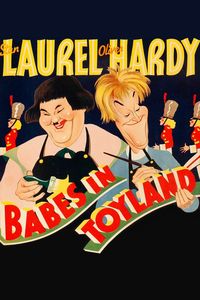Babes in Toyland (1934)
(On Cable TV, January 2020) This is not going to be a long review, because I’m not big on Christmas movies and I’m not big on Laurel and Hardy. Sure, I like both, but not to the point of obsessiveness, and watching Laurel-and-Hardy-meets-Christmas film Babes in Toyland as a January leftover is a few weeks too late to get into the spirit of things. It’s perhaps more interesting as a proto-fantasy film in which the comedy duo doesn’t quite know what to do with animated toys. If you’re here for the comedy duo, prepare to be disappointed, as the demands of a big-budget family fantasy overwhelm their usual brand of comedy—and then wonder why Laurel and Hardy had to be the anchor of a film (adapted from a decidedly non-Laurel-and-Hardy stage musical) that could have been just fine without them. Mickey Mouse shows up in what’s bound to be a surprise to most viewers. As a family film, though, it’s a bit rougher than more contemporary fare—they didn’t coddle kids back then, and it shows through some unpleasant imagery even deep in the fantasy. There are many versions of the film (monochrome or colourized), but I believe that the one I watched from TCM is the original one. Anyway—Babes in Toyland is intriguing, but I didn’t hate it and I didn’t love it either. A rewatch may improve things—and you know it’s bound to play at least once a year.


